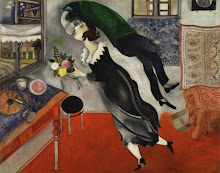When pain obeys the rules, it follows an understandable pattern--you hurt, you heal, and the pain goes away. So why does pain sometimes continue taking its tortuous toll beyond its usefulness as a response to injury? The answers (to the extent they're known) lie in the brain and nervous system...The nervous system, it turns out, is not just a static conduit for relaying signals--it is an actively changing participant in the pain process. While pain generally starts with a physical cause, when it persists it can cause peripheral nerve fibers at the site of the injury to become more sensitive so that even the slightest touch can feel excruciating, a condition know as allodynia.
Also, think of the way you react when pain first strikes. You flinch, you cringe, you guard the injury by tightening your muscles. These are normal reactions and may not produce any lasting harm in the short term, but over time they can kick off a process that leads to more pain. For a example, tightening your neck and shoulder muscles in response to a migraine headache may cause pain in those areas that persists...all of which can be aggravated by pain-related loss of sleep.
As pain persists, it can cause changes or damage to the nervous system itself, a concept known as plasticity, which scientists are only beginning to understand. In addition to nerve cells becoming hypersensitive, unremitting pain appears able to:
-Make damaged nerve fibers fire spontaneously and intensely, often producing a burning sensation similar to electric shock.
-Reorganize connections between nerve fibers so new connections are formed to produce pain that otherwise wouldn't have existed.
-Change the chemistry of pain processing so that endorphins are prevented from dialing back the volume on pain, perhaps due to a genetic deficiency.
Understanding that such changes take place--and gaining insights into how they work--is a major advance in pain medicine that points the way to potential new treatments. (p. 28-31)
Thursday, January 22, 2009
Chronic pain awareness
In The Doctors' Guide to Chronic Pain, it explains what happens when someone is in chronic pain. The more you understand about why your body is in pain, the better you will be able to treat it.
Subscribe to:
Post Comments (Atom)







1 comment:
Emily, I love you!
Post a Comment